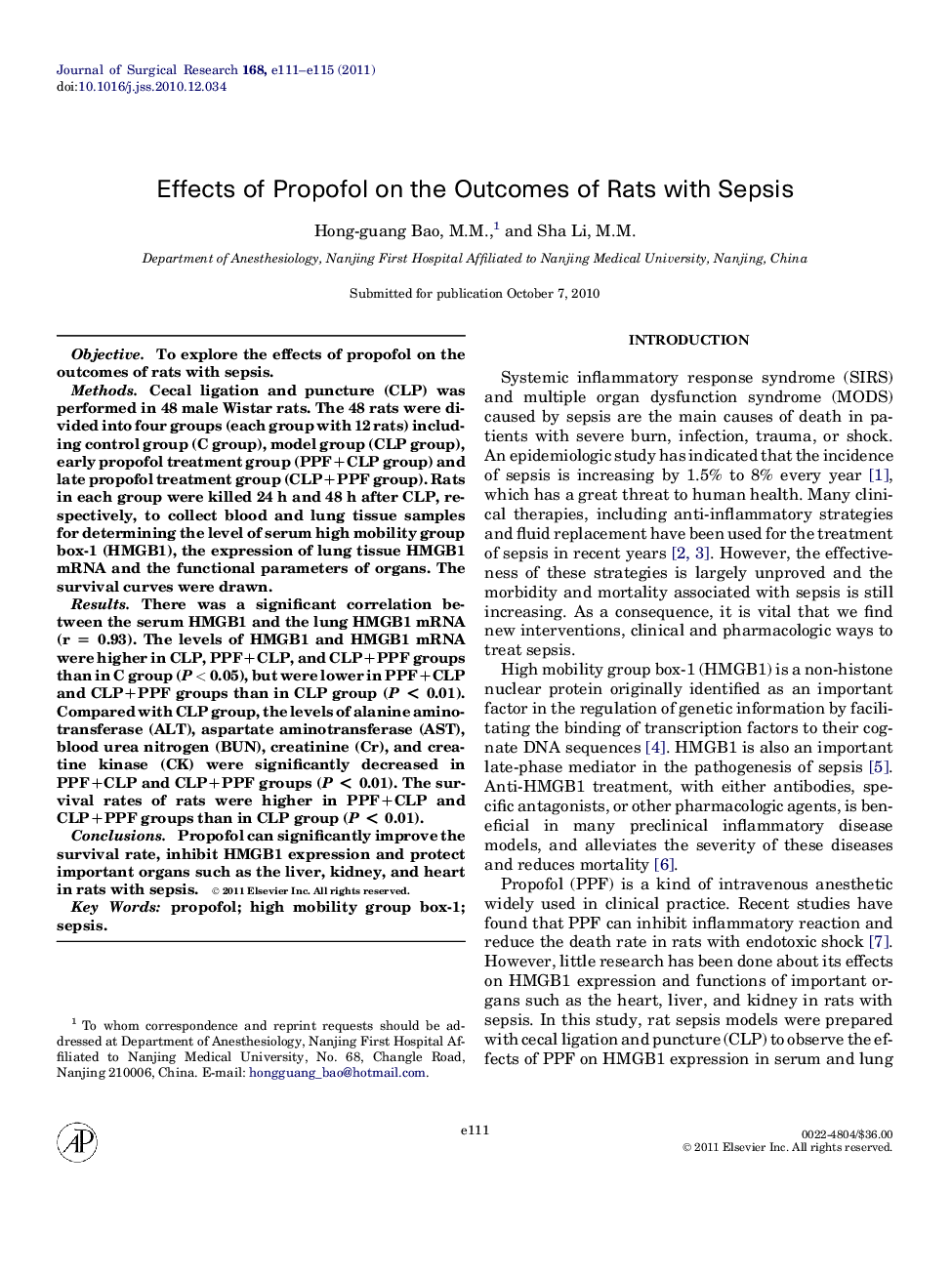| Article ID | Journal | Published Year | Pages | File Type |
|---|---|---|---|---|
| 4302203 | Journal of Surgical Research | 2011 | 5 Pages |
ObjectiveTo explore the effects of propofol on the outcomes of rats with sepsis.MethodsCecal ligation and puncture (CLP) was performed in 48 male Wistar rats. The 48 rats were divided into four groups (each group with 12 rats) including control group (C group), model group (CLP group), early propofol treatment group (PPF+CLP group) and late propofol treatment group (CLP+PPF group). Rats in each group were killed 24 h and 48 h after CLP, respectively, to collect blood and lung tissue samples for determining the level of serum high mobility group box-1 (HMGB1), the expression of lung tissue HMGB1 mRNA and the functional parameters of organs. The survival curves were drawn.ResultsThere was a significant correlation between the serum HMGB1 and the lung HMGB1 mRNA (r = 0.93). The levels of HMGB1 and HMGB1 mRNA were higher in CLP, PPF+CLP, and CLP+PPF groups than in C group (P < 0.05), but were lower in PPF+CLP and CLP+PPF groups than in CLP group (P < 0.01). Compared with CLP group, the levels of alanine aminotransferase (ALT), aspartate aminotransferase (AST), blood urea nitrogen (BUN), creatinine (Cr), and creatine kinase (CK) were significantly decreased in PPF+CLP and CLP+PPF groups (P < 0.01). The survival rates of rats were higher in PPF+CLP and CLP+PPF groups than in CLP group (P < 0.01).ConclusionsPropofol can significantly improve the survival rate, inhibit HMGB1 expression and protect important organs such as the liver, kidney, and heart in rats with sepsis.
